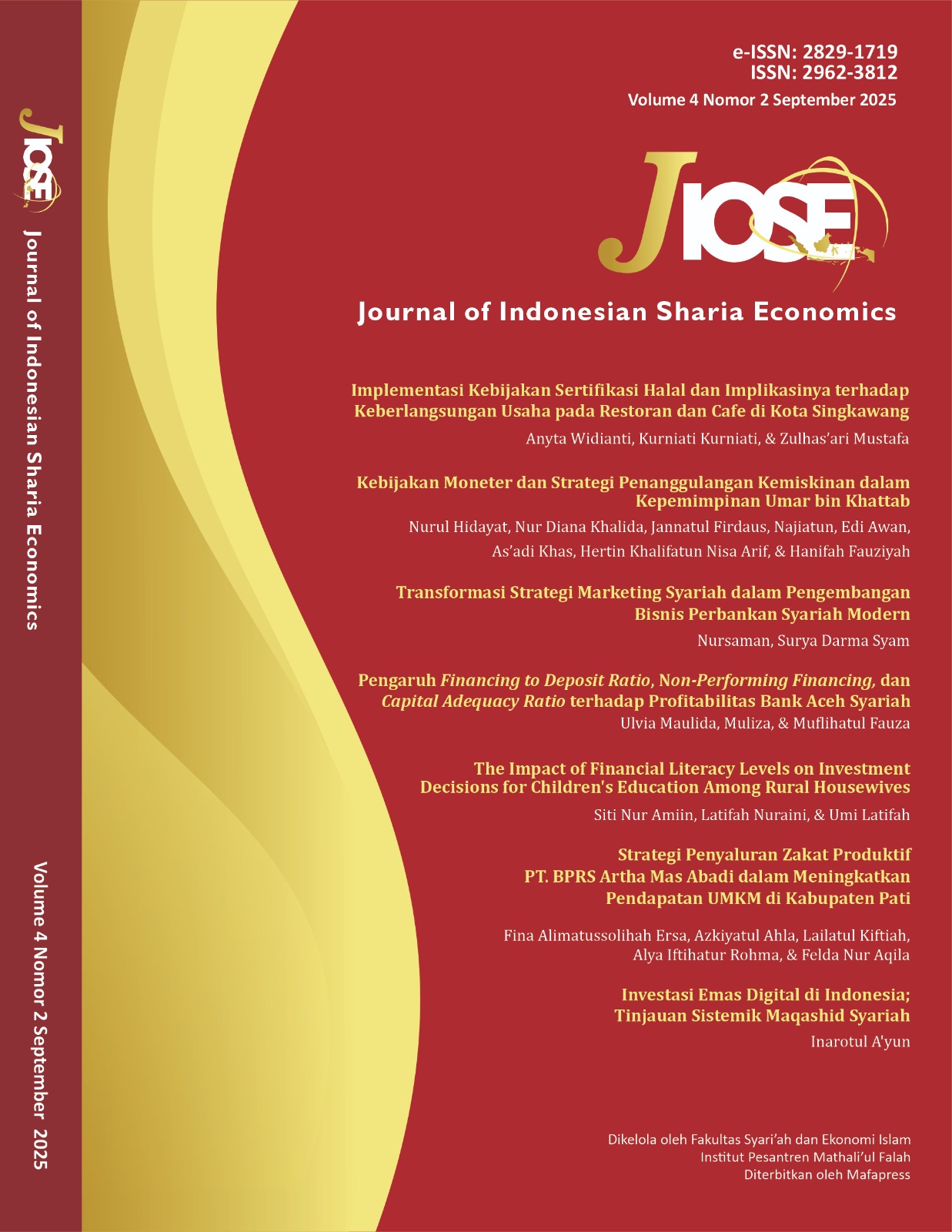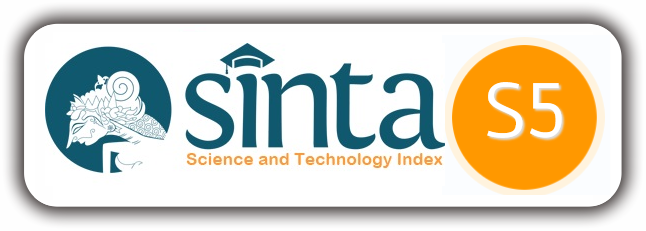The Impact of Financial Literacy Levels on Investment Decisions for Children's Education Among Rural Housewives
Abstract
This study investigates the level of financial literacy of rural housewives and its impact on children's education investment decisions. A quantitative descriptive method was employed, utilizing Moderated Regression Analysis (MRA). The sampling technique used was non-probability sampling, specially a convenience sampling method, which involved distributing questionnaires. The results of this research indicate that housewives have a relatively high financial literacy level, with an average score of 56.79. Most housewives in the villages of Sambilawang and Kadilangu hold a high school and bachelor's degree. This level of financial literacy has a significant impact on children's education investment (11 %), while the rest are influenced by other variables but has a relatively low investment in children's education funds at 0.66. because of the income earned from the Rp. 1,000,000 to < 2,500,000 per month and the average job of these housewives. are the majority of the officers or employees. The Research subjects consisted of 53 housewives in the Sambilawang, Kadilangu village, Trangkil sub-district, Pati district. This study recommends a policy to increase financial literacy among rural housewives and optimize investment in children's education to create more sustainable economic conditions in rural communities
References
CHEN, H. 1998. “An Analysis of Personal Financial Literacy among College Students.” Financial Services Review. 7(2). 107–28.
Deddy Mulyana. 2011. Ilmu Komunikasi Suatu Pengantar. PT Remaja Rosdakarya.
Domino, Primus. 2018. “Investasi Dalam Bidang Pendidikan Anak Untuk Meningkatkan Kualitas Kehidupan Keluarga.” Jurnal Inovasi Pendidikan Dasar. 2(1).77–85.
Esfandiari, Maryam, Beatrice Sciacca, Sandra Feijóo, Derek Alan Laffan, Tijana Milosevic, Carol O’Toole, and James O’Higgins Norman. 2025. “Trends in Digital Technologies to Address Children’s Online Safety Education: A Systematic Scoping Review.” International Journal of Educational Research Open. 9(March).
Fajar, CM, and D Mulyanti Pengabdian. 2020. “Meningkatkan Taraf Perekonomian Dan Kesejahteraan Melalui Perencanaan Investasi Pendidikan.” Ejournal.Bsi.Ac.Id. 2(2). 74–79.
Gan, Hongwu, Chuan Lin, Yang Zhou, and Zhiyi Zhuo. 2025. “Adult Children’s Education and Elderly Parents’ Energy Poverty: Evidence from China.” Energy Policy 202, no. February.
Gbratto-dobe, Sonia A W, and Hugues B Segnon. 2025. “SSM - Health Systems Is Mother ’ s Education Essential to Improving the Nutritional Status of ˆ Te d ′ Ivoire ? Children under Five in C O.” SSM - Health Systems. 4(February).
Laaninen, Markus. 2025. “Duration of Child Home Care Allowance Period and School Success : Differences by Parental Education Level and Ethnic Origins.” Research in Social Stratification and Mobility. 98(Juni).
Lindiawatie, Lindiawatie, and Dhona Shahreza. 2021. “Penyuluhan Literasi Keuangan Pada Ibu Rumah Tangga Di Depok Sebagai Dasar Membangun Ketahanan Keuangan Keluarga.” Warta LPM. 24(3). 521–32.
Lownsbery, Douglas S. 2025. “A Synthesis Review of Four Literature Reviews of Disaster Risk Reduction Education for Children.” International Journal of Disaster Risk Reduction. 125(May)
Nuris, Dudung Ma’ruf, and Tsania Rahmawati. 2021. “Faktor-Faktor Yang Mempengaruhi Literasi Keuangan Mahasiswa Pendidikan Akuntansi Di Era Digital.” Jurnal Pendidikan Akuntansi (JPAK). 9(3). 331–39.
OJK. 2022a. “Edukasi Keuangan.” 2022. https://ojk.go.id/id/kanal/edukasi-dan-perlindungan-konsumen/Pages/literasi-keuangan.aspx.
———. 2022b. “Siaran Pers Survei Nasional Literasi Dan Inklusi Keuangan Tahun 2022.” Otoritas Jasa Keuangan, November: 10–12.
Putri, Aulia, and Ida Miharti. 2021. “Analisis Literasi Keuangan Dan Pendapatan Terhadap Perencanaan Keuangan Pada Dana Pendidikan Anak.” Jurnal Imiah Manajemen Dan Bisnis. 2.174–86.
Rachmalita Sari, Dea. 2017. “Pengaruh Literasi Keuangan, Pendapatan, Dan Terhadap Keputusan Investasi Etnis China Di Surabaya.” Perpustakaan Universitas Hayam Wuruk Perbanas Surabaya, 1–16.
Ridgway, Lael, Lisa McKenna, Stacey Hokke, Naomi Hackworth, and Jan M. Nicholson. 2025. “Education for Family-Centred Care: A Qualitative Study with Educators of Advanced Practice Child and Family Health Nurses.” Nurse Education in Practice. 84(Juni).
Ristanto, Yoga. 2020. “Pengaruh Financial Literacy, Pengetahuan Investasi Dan Pelatihan Pasar Modal Terhadap Keputusan Investasi Melalui Minat Investasi Sebagai Variabel Intervening.” Skripsi Universitas Negeri Semarang. 1(1). 6–7.
Rita, Maria Rio, and Benny Santoso. 2017. “Literasi Keuangan Dan Perencanaan Keuangan Pada Dana Pendidikan Anak.” Jurnal Ekonomi. 20(2).212–27.
Rosalin, Elin. 2006. “Human Investment.” Jurnal Manajemen Pendidikan. 2(2). 8–20.

This work is licensed under a Creative Commons Attribution-ShareAlike 4.0 International License.









